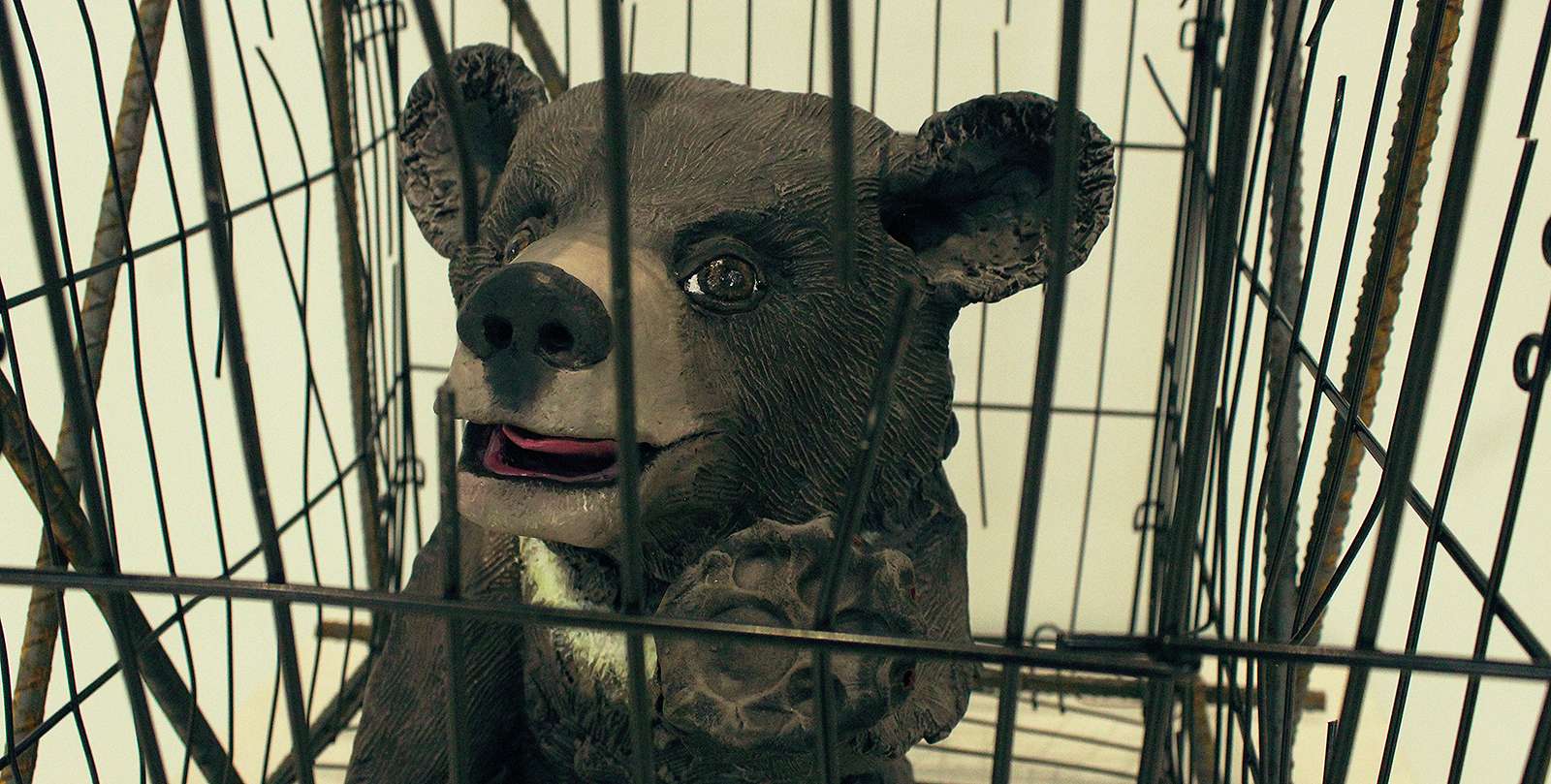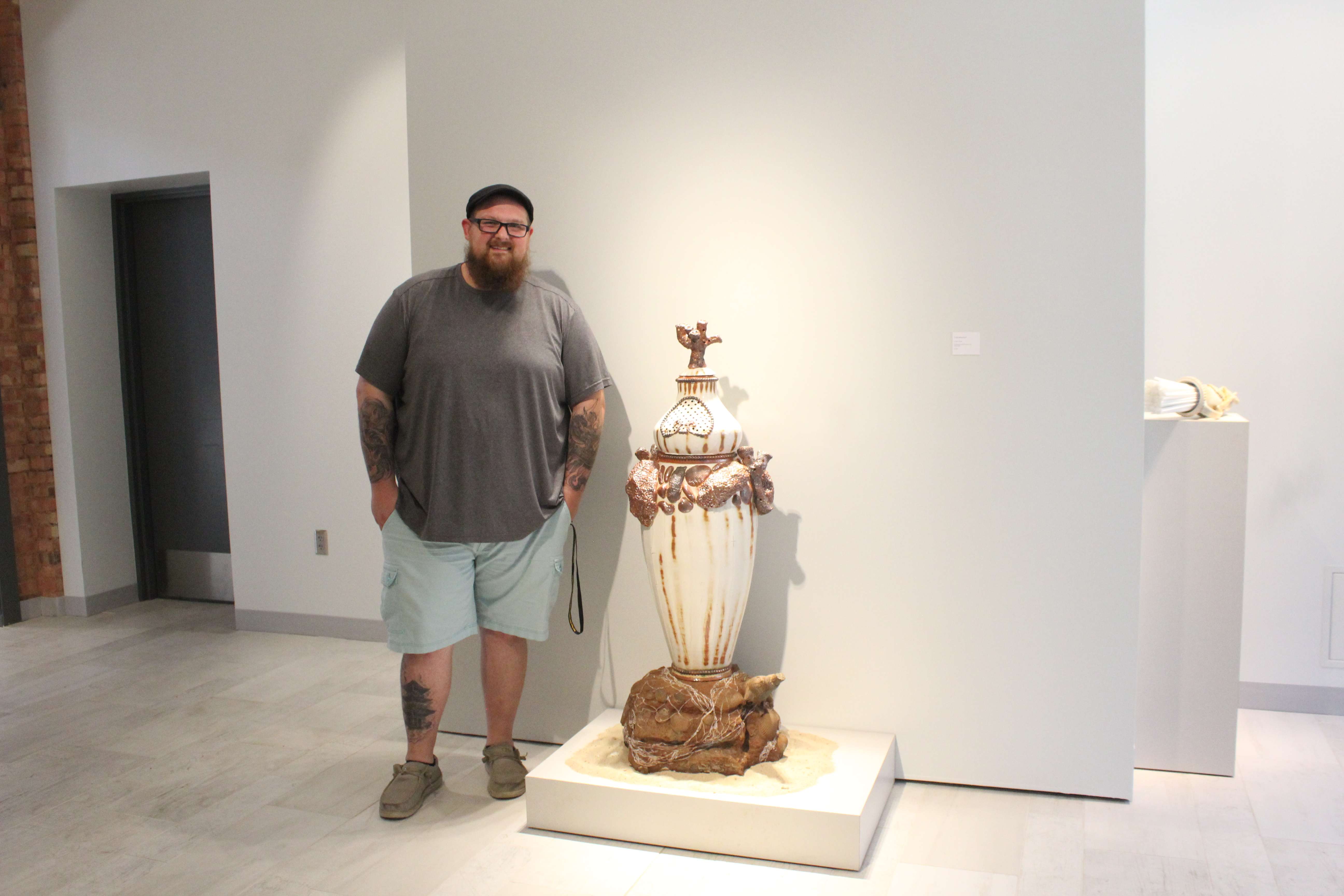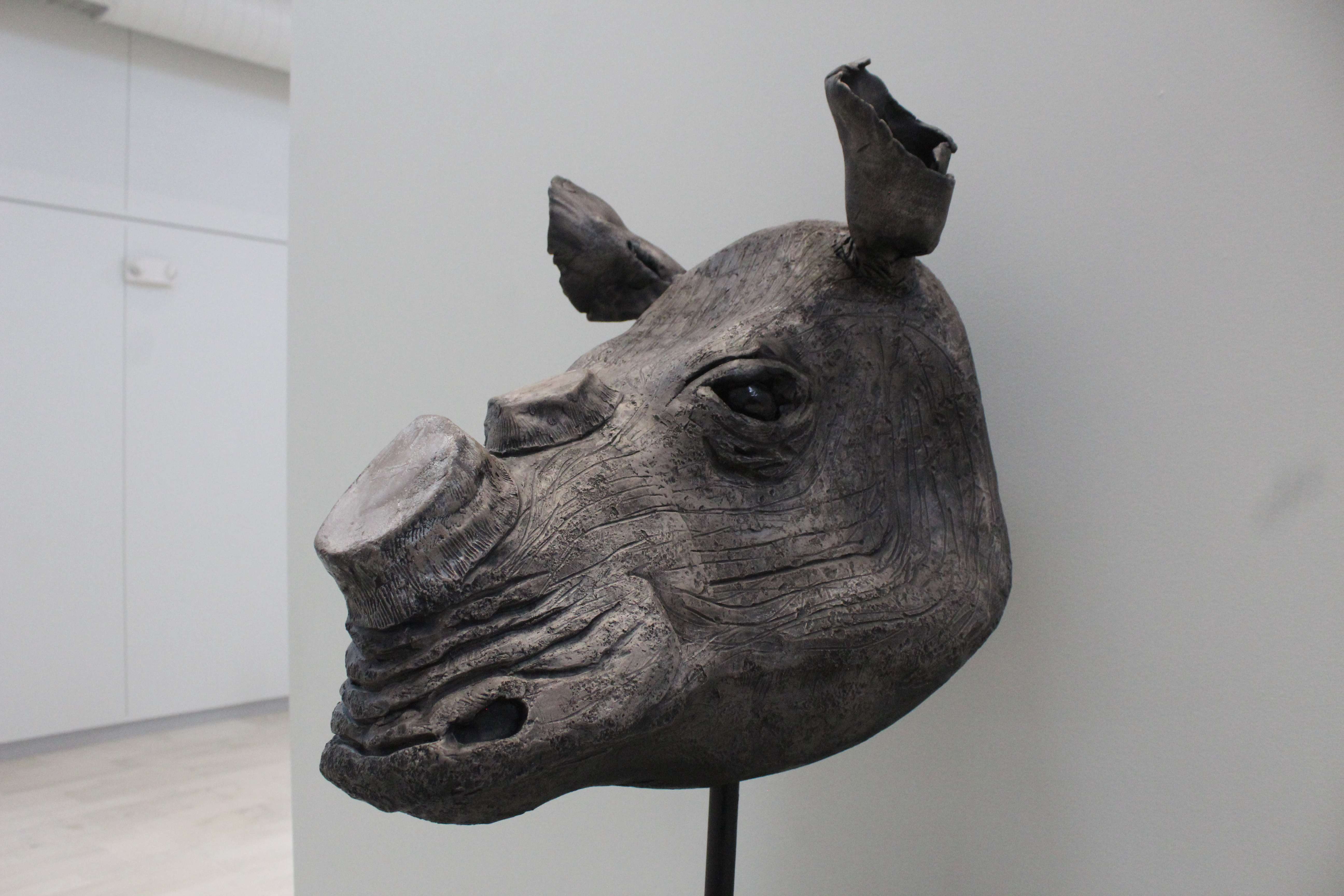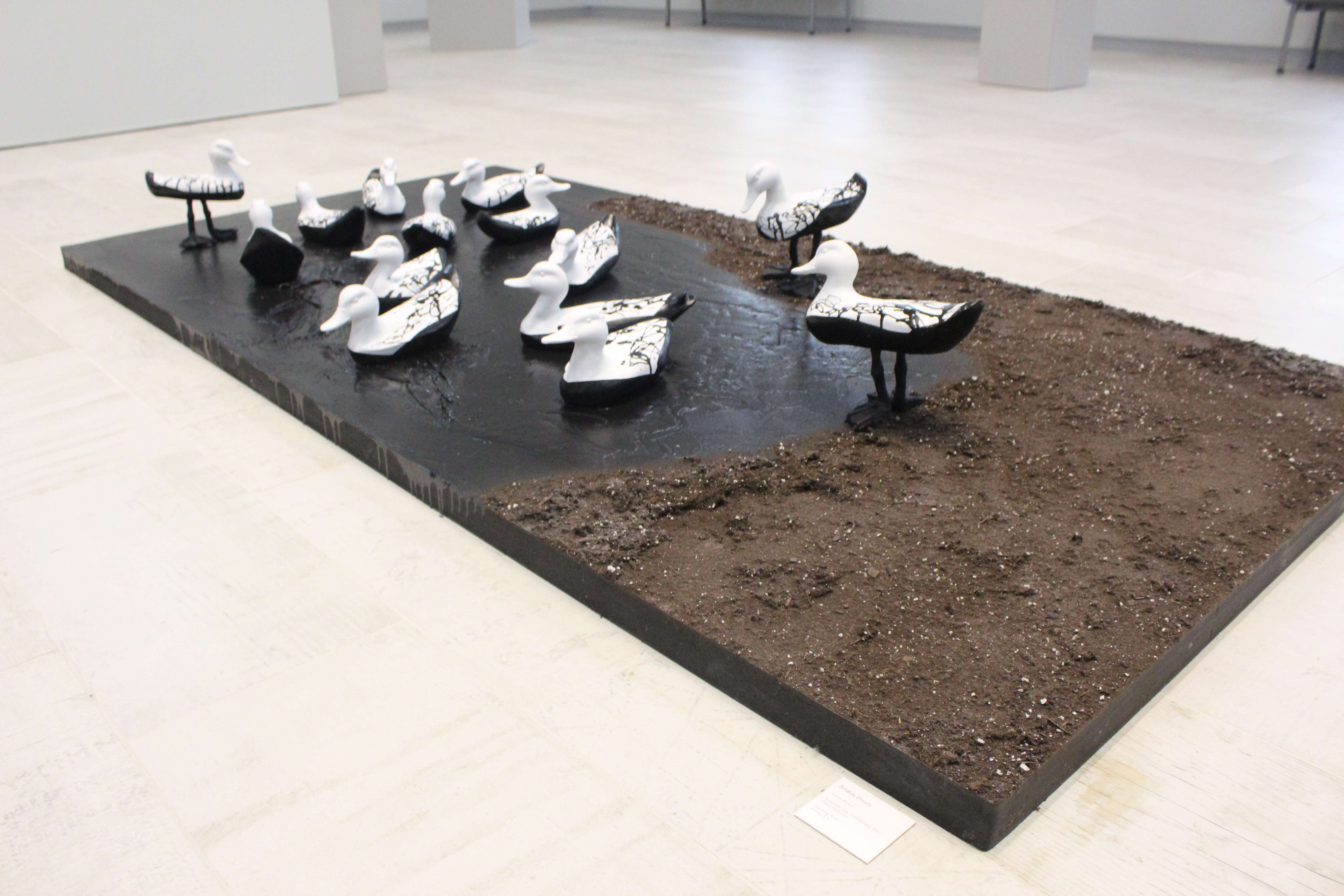
By CRISTINA JANNEY
Hays Post
A master's student at Fort Hays State University is highlighting the mistreatment of wild creatures and the environment in his MFA art exhibit "Inhumane."
Jordan Brown's exhibit is on display now through Wednesday at the Moss-Thorns Gallery of Art on the Fort Hays State University campus. The gallery is open 10 a.m. to 2 p.m. Mondays through Fridays during the summer months.
"My inspiration for my thesis is to bring about awareness to the inhumane acts that humans are putting on animals," he said, "whether that be through trafficking, poaching or pollution or the absent thought of the animal and the environment."
Brown, 29, a Concordia native, works in ceramics, but also has several cast pieces.

The artwork that sparked it all is titled "Battery Bear."
In Asia, Asiatic black bears are captured from the wild or raised in captivity so their bile from their gallbladders can be harvested for traditional medicine. The bears are kept in small cages and repeatedly stabbed to extract the bile until their early deaths, Brown said.
The captive bears' teeth and claws are also removed. The bears live about 30 years in the wild, but only about five years in captivity.
"It's been going on for thousands of years, and I was shocked that I never heard of it," he said. ... "For me to be an animal lover and see this inhumane act on animals is shocking."

Several of his pieces highlight rhinoceros poaching. A large ceramic rhino head titled "Why Me?" is exhibited with its horns cut off. Sanctuaries in Africa often remove a significant portion of rhinos' horns to help protect them from poachers.
"It's a horrible thing, because it leaves the rhino unprotected from other animals and situations," Brown said. "It leaves them pretty much defenseless."
Some rhino sanctuaries assign 24-hour armed guards to rhinos, who are killed for their horns, which are used in traditional medicines.
The trade in elephant tusks and rhino horns is about a $10 billion industry, Brown said.
"Broken Treaty" is a piece that hits closer to home. Brown said Kansas, especially Ellis County, has many open pits associated with oil production. Waterfowl land on what they think is water and are covered in oil or other chemicals.
President Trump eased punishments for companies under the Migratory Bird Treaty of 1918.

"There were a lot of animals that died because there was no one there to speak for them," Brown said.
Brown's art also explores pollution in the world's oceans.
"I think it's still inhumane to throw your trash and not think about where your trash is going. It is the lack of thought for the animal and the environment that is angering me," he said.
"I think we should be conscientious of what we are doing. We know we are doing a little bit of bad. We should try to do a little bit of good. If you recycle just a little, that is your part. If someone sees that, you may spark them to recycle. It is a chain effect."

He said was inspired by ancient Greek, Chinese and European pottery styles in creating large vessels for his thesis exhibit.
"Their exceptional skill and knowledge of the potter's wheel has significantly inspired my work," he said in his thesis statement.
Brown and his wife have bought a house in Ellis, and he hopes to open a studio in the area.
If you are interested in purchasing or learning more about Brown's work, he can be reached at [email protected].



